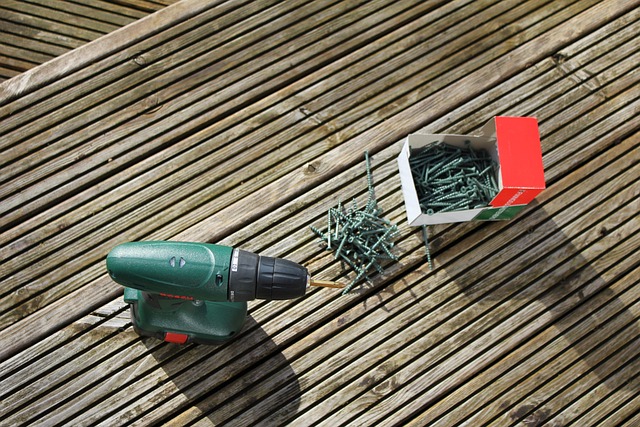What To Know About Ready To Assemble Cabinets In 2025 - A Comprehensive Guide
Ready to assemble (RTA) cabinets continue to be a popular choice for homeowners and renovators seeking affordable yet stylish storage solutions. As we look ahead to 2025, the RTA cabinet market is evolving with new materials, designs, and manufacturing techniques. Whether you're planning a kitchen renovation, bathroom update, or organizing a garage space, understanding the latest developments in RTA cabinets can help you make informed decisions about your storage needs. This guide explores everything you need to know about RTA cabinets in 2025, from basic concepts to selection tips.

What Are Ready To Assemble Cabinets?
Ready to assemble cabinets, often abbreviated as RTA cabinets, are furniture pieces that come in flat packages with all necessary components and hardware included. Unlike pre-assembled cabinets, RTA options require the buyer to put them together following the included instructions. In 2025, RTA cabinets have become significantly more sophisticated than their predecessors, featuring improved joinery techniques, higher-quality materials, and more user-friendly assembly mechanisms. Most modern RTA cabinets use cam lock systems, dovetail joints, or other secure connection methods that provide stability comparable to factory-assembled alternatives while maintaining the convenience of compact shipping.
RTA Cabinet Options and Pricing in 2025
The market for RTA cabinets in 2025 offers unprecedented variety in terms of materials, styles, and price points. Traditional wood options like oak, maple, and cherry remain popular, but eco-friendly alternatives like bamboo and recycled composite materials have gained significant market share. Additionally, high-tech finishes that mimic natural materials while offering enhanced durability have become widely available.
Price ranges for RTA cabinets in 2025 vary considerably based on material quality, construction method, and brand reputation. Entry-level cabinets typically start around $80-150 per linear foot, while mid-range options generally cost $150-300 per linear foot. Premium RTA cabinets with high-end materials and advanced features can range from $300-500 per linear foot.
| Cabinet Quality Level | Average Price (per linear foot) | Typical Materials | Features |
|---|---|---|---|
| Budget | $80-150 | MDF, thermofoil, laminate | Basic hardware, simple designs |
| Mid-range | $150-300 | Plywood, solid wood fronts | Soft-close hinges, dovetail drawers |
| Premium | $300-500 | Solid wood, specialized finishes | Custom sizing options, premium hardware |
Prices, rates, or cost estimates mentioned in this article are based on the latest available information but may change over time. Independent research is advised before making financial decisions.
RTA Cabinets Pros and Cons
Understanding the advantages and disadvantages of RTA cabinets in 2025 is essential for making an informed purchase decision. These factors have evolved as manufacturing techniques and consumer expectations have changed.
Pros:
-
Cost-effectiveness: RTA cabinets typically cost 30-50% less than comparable pre-assembled options
-
Shipping convenience: Flat packing reduces shipping costs and environmental impact
-
Immediate availability: No weeks-long wait times for custom cabinet production
-
DIY-friendly: Most 2025 models feature improved assembly systems requiring minimal tools
-
Customization: Many manufacturers now offer modular components that can be configured to fit specific spaces
Cons:
-
Assembly time: Despite improvements, assembly still requires several hours depending on the number of cabinets
-
Tool requirements: Some models still require specific tools that consumers may need to purchase
-
Quality variations: Significant differences exist between budget and premium options
-
Potential for error: Incorrect assembly can compromise cabinet stability and appearance
-
Limited customization: While improving, size and configuration options remain more limited than custom cabinetry
Tips for Choosing RTA Cabinets in 2025
Selecting the right RTA cabinets requires careful consideration of several factors to ensure satisfaction with your purchase. In 2025, consumers should consider these updated guidelines when shopping for RTA storage solutions:
-
Material quality: Look for cabinets with solid wood frames and doors or, at minimum, furniture-grade plywood for box construction. Avoid cabinets made entirely of particleboard or low-density fiberboard, which have shorter lifespans.
-
Hardware specifications: Examine the included hardware carefully. Quality hinges, drawer glides, and assembly components significantly impact longevity. Soft-close mechanisms have become standard in mid-range and premium models.
-
Assembly mechanism: Review assembly requirements before purchasing. The most user-friendly cabinets use tool-less assembly systems or require only basic tools. Some manufacturers now offer augmented reality assembly guides accessible through smartphone apps.
-
Warranty offerings: In 2025, reputable RTA cabinet manufacturers typically offer warranties ranging from 5 to 25 years. A solid warranty often indicates manufacturer confidence in product quality.
-
Environmental certifications: Look for cabinets that meet CARB Phase 2 compliance for formaldehyde emissions and other environmental standards. Sustainable material sourcing certifications have become increasingly important to consumers.
-
Design compatibility: Consider how the cabinets will integrate with your existing décor or renovation plans. Many manufacturers now offer digital visualization tools to preview how cabinets will look in your space.
Future Trends for RTA Cabinets Beyond 2025
The RTA cabinet industry continues to innovate rapidly. Looking beyond 2025, several emerging trends are likely to shape the market. Smart storage solutions with integrated technology features are gaining popularity, including cabinets with built-in charging stations, LED lighting systems, and inventory management capabilities. Additionally, more manufacturers are embracing circular economy principles, designing cabinets that can be easily disassembled and recycled at the end of their lifecycle.
Material science advancements are also influencing the industry, with new composites offering improved durability and moisture resistance while maintaining affordable price points. For consumers, these developments mean that RTA cabinets will likely continue to close the quality gap with pre-assembled options while maintaining their cost advantage.
Ready to assemble cabinets in 2025 represent a significant evolution from their earlier counterparts, offering improved quality, easier assembly, and greater style variety. By understanding the options available, carefully assessing your needs, and choosing reputable manufacturers, you can find RTA cabinet solutions that provide excellent value while meeting your storage and aesthetic requirements.




